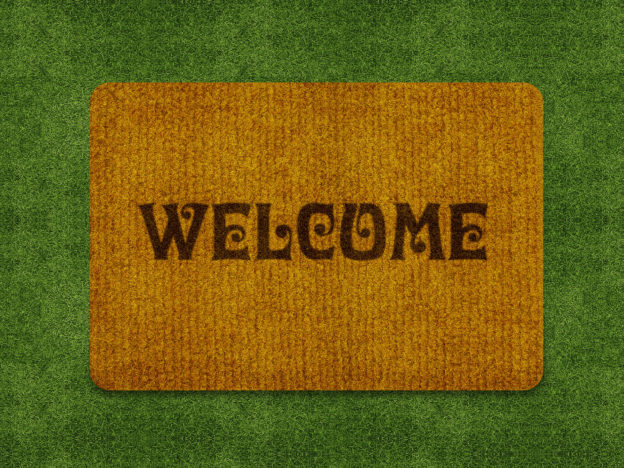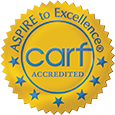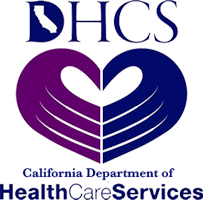The 12-step recovery program is one of the most widely known and longest standing addiction treatment methods. 12-step programs are used to treat all types of addictions, from gambling to substance abuse. The 12-step methodology is studied often, though it’s difficult to get concrete statistics because of the groups’ anonymity. Still, we know that the 12 steps are effective and remain a key element in Pasadena drug treatment.
What is a 12-step Program?
12-step programs follow the 12-step model, which focuses on abstaining from drugs and alcohol through spiritual growth and peer support. Many rehabs in Pasadena California introduce addicts to the principles of 12-step treatment. Once treatment is complete, 12-step meetings are recommended to maintain sobriety.
Though there are 12-step groups held all over the world for all types of addictions, the meetings stick close to the 12 steps that were originally created by Bob Smith and Bill Wilson in the 1930s. Meetings are a crucial part of going through the steps, as it’s important for people to connect with others and receive support and guidance. Going through the steps alone is not the purpose of the 12-step model.
Fortunately, many 12-step meetings are open meetings, so anyone can join. If you don’t like the first group you attend, you can try another. Or, bring a friend or family member along for added support. Other meetings are closed and allow exclusive access to those recovering from specific addictions. The group you choose will shape your recovery experience, so it’s important to be in a home group where you feel reassured and supported.
What are the 12 Steps?
The 12 steps are deep, so they are hard to cover in a single post. But, we will go through each step briefly so that you know what they are and how they support alcohol recovery in Pasadena.
Step 1. We admitted we were powerless over alcohol—that our lives had become unmanageable.
The first step is when you admit that you have a problem. You are rejecting the denial and admitting that you are powerless over drugs and alcohol. Your current way of living life isn’t working anymore, and you need help to recover.
Step 2. Came to believe that a Power greater than ourselves could restore us to sanity.
Step 2 is about hope. With the right help, there is no need to keep going further down the rabbit hole. Even though you are powerless against your addiction, recovery is possible. By opening up to a higher power, you can be led in the right direction.
Step 3. Made a decision to turn our will and our lives over to the care of God as we understood Him.
In step 3, action begins. The 12-step model is not religious, so “God” can be any higher power or even your support system, human nature or a mental health professional. By believing in a higher power, you can look outside yourself and think less selfishly. Meditation and prayer help with this step.
Step 4. Made a searching and fearless moral inventory of ourselves.
In this step, you have to eliminate opportunities for denial by being honest with yourself. This means acknowledging all of your faults. When you know what your strengths and weaknesses are, you can make better choices that keep you safe and sober.
Step 5. Admitted to God, to ourselves, and to another human being the exact nature of our wrongs.
Once you acknowledge your wrongdoings, you must unburden yourself of this guilt, otherwise you could return to self-destructive behaviors. It helps to talk to someone to alleviate feelings of guilt and shame. Group therapy and individual counseling are both helpful.
Step 6. Were entirely ready to have God remove all these defects of character.
Step 6 is a hard step for a lot of people because it requires letting go of the behaviors and attitudes that are holding them back. You may have to find new ways of interacting with the world, as you can no longer structure your life around drugs and alcohol
Step 7. Humbly asked Him to remove our shortcomings.
Step 7 has to do with humility. Now that you are able to see yourself as you truly are – a person with strengths and weaknesses – you can better recognize when you need help to overcome problems in your life.
Step 8. Made a list of all persons we had harmed and became willing to make amends to them all.
In step 4, you completed a personal inventory. In step 8, you need to complete a social inventory. This requires you to name the people you hurt while you were actively using drugs and alcohol. It’s helpful to make a list of your wrongdoings so that no stone is left unturned.
Step 9. Made direct amends to such people wherever possible, except when to do so would injure them or others.
This is another step that people struggle with because it involves face-to-face apologies. Asking for forgiveness takes a lot of courage, but you need to do this to move forward. Otherwise, guilt and shame will creep back up. Take responsibility, accept that you wronged the person and ask for forgiveness. This is the only way to move forward in your recovery.
Step 10. Continued to take a personal inventory and when we were wrong promptly admitted it.
In this step, you continue to grow in your recovery and learn to better recognize triggers, behaviors and attitudes that could result in relapse. The goal is to continually improve yourself rather than making excuses and returning to harmful ways of coping.
Step 11. Sought through prayer and meditation to improve our conscious contact with God as we understood Him, praying only for knowledge of His will for us and the power to carry that out.
This is one of the more spiritual steps, but by this point in the journey, most people have come to terms with a higher power of their own. Prayer is talking to this higher power. Meditation is listening to this higher power.
Step 12. Having had a spiritual awakening as the result of these steps, we tried to carry this message to alcoholics and to practice these principles in all our affairs.
Last is step 12 – helping others who are struggling. Serving others is one of the best things you can do for your personal and spiritual growth. It reminds you of how far you’ve come, holds you accountable and gives you a sense of purpose. Helping others, after all, is what the 12 steps are all about!
Pax House Recovery Integrates the 12 Steps
The 12 steps are nothing to be feared or avoided. They are not rooted in religion, and they allow for all beliefs and backgrounds. Not only does the 12-step model help people recover from substance abuse but also help them to live rewarding, fulfilling lives. Pax House Recovery integrates the 12 steps so that clients are comfortable with them when they leave treatment. To learn more about building this foundation at our Pasadena drug treatment center, contact us today.


